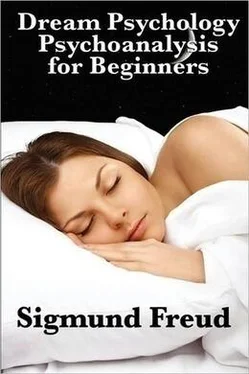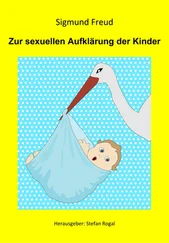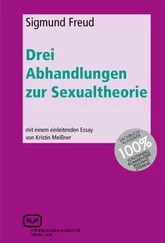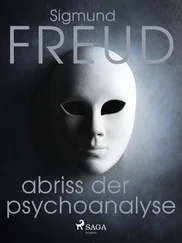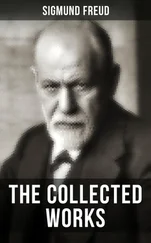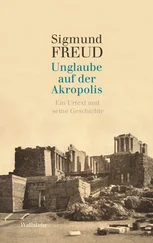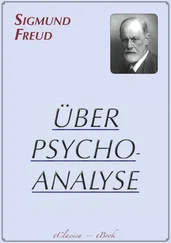In the most favorable case the development of pain terminates as soon as the energy has been withdrawn from the thoughts of transference in the Forec., and this effect characterizes the intervention of the principle of pain as expedient. It is different, however, if the repressed unconscious wish receives an organic enforcement which it can lend to its thoughts of transference and through which it can enable them to make an effort towards penetration with their excitement, even after they have been abandoned by the occupation of the Forec. A defensive struggle then ensues, inasmuch as the Forec. reinforces the antagonism against the repressed ideas, and subsequently this leads to a penetration by the thoughts of transference (the carriers of the unconscious wish) in some form of compromise through symptom formation. But from the moment that the suppressed thoughts are powerfully occupied by the unconscious wish–feeling and abandoned by the foreconscious occupation, they succumb to the primary psychic process and strive only for motor discharge; or, if the path be free, for hallucinatory revival of the desired perception identity. We have previously found, empirically, that the incorrect processes described are enacted only with thoughts that exist in the repression. We now grasp another part of the connection. These incorrect processes are those that are primary in the psychic apparatus; they appear wherever thoughts abandoned by the foreconscious occupation are left to themselves, and can fill themselves with the uninhibited energy, striving for discharge from the unconscious . We may add a few further observations to support the view that these processes designated "incorrect" are really not falsifications of the normal defective thinking, but the modes of activity of the psychic apparatus when freed from inhibition. Thus we see that the transference of the foreconscious excitement to the motility takes place according to the same processes, and that the connection of the foreconscious presentations with words readily manifest the same displacements and mixtures which are ascribed to inattention. Finally, I should like to adduce proof that an increase of work necessarily results from the inhibition of these primary courses from the fact that we gain a comical effect , a surplus to be discharged through laughter, if we allow these streams of thought to come to consciousness .
The theory of the psychoneuroses asserts with complete certainty that only sexual wish–feelings from the infantile life experience repression (emotional transformation) during the developmental period of childhood. These are capable of returning to activity at a later period of development, and then have the faculty of being revived, either as a consequence of the sexual constitution, which is really formed from the original bisexuality, or in consequence of unfavorable influences of the sexual life; and they thus supply the motive power for all psychoneurotic symptom formations. It is only by the introduction of these sexual forces that the gaps still demonstrable in the theory of repression can be filled. I will leave it undecided whether the postulate of the sexual and infantile may also be asserted for the theory of the dream; I leave this here unfinished because I have already passed a step beyond the demonstrable in assuming that the dream–wish invariably originates from the unconscious. [24] Here, as in other places, there are gaps in the treatment of the subject, which I have left intentionally, because to fill them up would require on the one hand too great effort, and on the other hand an extensive reference to material that is foreign to the dream. Thus I have avoided stating whether I connect with the word "suppressed" another sense than with the word "repressed." It has been made clear only that the latter emphasizes more than the former the relation to the unconscious. I have not entered into the cognate problem why the dream thoughts also experience distortion by the censor when they abandon the progressive continuation to consciousness and choose the path of regression. I have been above all anxious to awaken an interest in the problems to which the further analysis of the dreamwork leads and to indicate the other themes which meet these on the way. It was not always easy to decide just where the pursuit should be discontinued. That I have not treated exhaustively the part played in the dream by the psychosexual life and have avoided the interpretation of dreams of an obvious sexual content is due to a special reason which may not come up to the reader's expectation. To be sure, it is very far from my ideas and the principles expressed by me in neuropathology to regard the sexual life as a "pudendum" which should be left unconsidered by the physician and the scientific investigator. I also consider ludicrous the moral indignation which prompted the translator of Artemidoros of Daldis to keep from the reader's knowledge the chapter on sexual dreams contained in the Symbolism of the Dreams . As for myself, I have been actuated solely by the conviction that in the explanation of sexual dreams I should be bound to entangle myself deeply in the still unexplained problems of perversion and bisexuality; and for that reason I have reserved this material for another connection.
Nor will I further investigate the difference in the play of the psychic forces in the dream formation and in the formation of the hysterical symptoms, for to do this we ought to possess a more explicit knowledge of one of the members to be compared. But I regard another point as important, and will here confess that it was on account of this very point that I have just undertaken this entire discussion concerning the two psychic systems, their modes of operation, and the repression. For it is now immaterial whether I have conceived the psychological relations in question with approximate correctness, or, as is easily possible in such a difficult matter, in an erroneous and fragmentary manner. Whatever changes may be made in the interpretation of the psychic censor and of the correct and of the abnormal elaboration of the dream content, the fact nevertheless remains that such processes are active in dream formation, and that essentially they show the closest analogy to the processes observed in the formation of the hysterical symptoms. The dream is not a pathological phenomenon, and it does not leave behind an enfeeblement of the mental faculties. The objection that no deduction can be drawn regarding the dreams of healthy persons from my own dreams and from those of neurotic patients may be rejected without comment. Hence, when we draw conclusions from the phenomena as to their motive forces, we recognize that the psychic mechanism made use of by the neuroses is not created by a morbid disturbance of the psychic life, but is found ready in the normal structure of the psychic apparatus. The two psychic systems, the censor crossing between them, the inhibition and the covering of the one activity by the other, the relations of both to consciousness—or whatever may offer a more correct interpretation of the actual conditions in their stead—all these belong to the normal structure of our psychic instrument, and the dream points out for us one of the roads leading to a knowledge of this structure. If, in addition to our knowledge, we wish to be contented with a minimum perfectly established, we shall say that the dream gives us proof that the suppressed, material continues to exist even in the normal person and remains capable of psychic activity . The dream itself is one of the manifestations of this suppressed material; theoretically, this is true in all cases; according to substantial experience it is true in at least a great number of such as most conspicuously display the prominent characteristics of dream life. The suppressed psychic material, which in the waking state has been prevented from expression and cut off from internal perception by the antagonistic adjustment of the contradictions , finds ways and means of obtruding itself on consciousness during the night under the domination of the compromise formations.
Читать дальше
